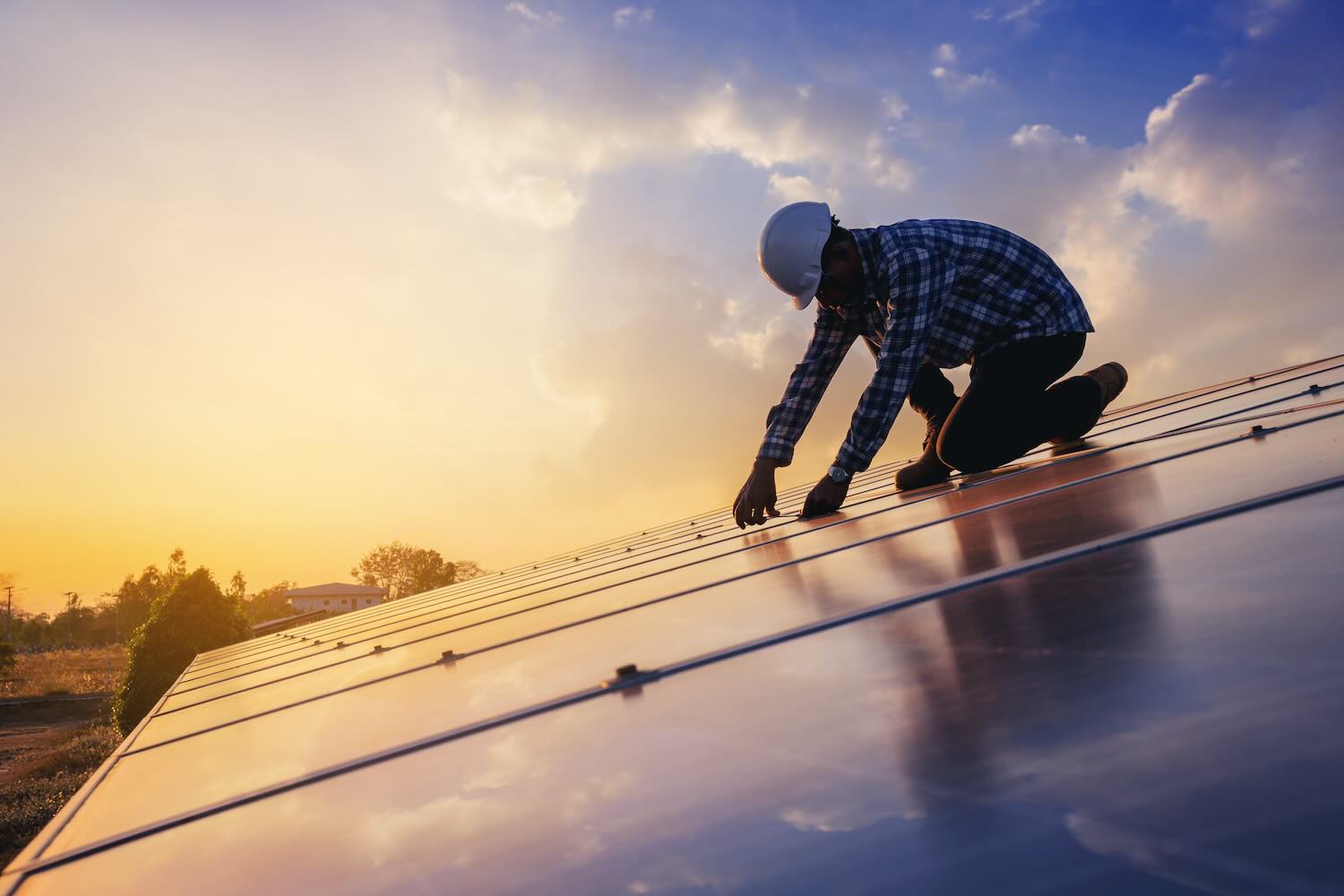On August 16, President Biden signed the Inflation Reduction Act, federal legislation that invests nearly $400 billion over 10 years in renewable energy generation, clean vehicles, building decarbonization, and other efforts to mitigate greenhouse gas pollution.
A key part of the package is a $27 billion Greenhouse Gas Reduction Fund at EPA, with $15 billion of that money set aside to serve low-income and disadvantaged communities. The funds dedicated to financing projects in low-income communities represents a significant portion of the IRA funds, but if not deployed appropriately they will fail to meet their objectives.
The Greenhouse Gas Reduction Fund will help to unlock existing capital at state green banks, community development financial institutions, and other community-based lenders that has gone un-deployed in low-income communities for the lack of a final piece of catalytic capital, flexible capital that will attract more capital.
As a performance track record is established for these investments, they will begin to attract substantial new investment from traditional banks and other investors. One of the key tasks for community lenders and green banks will be both to efficiently utilize their existing capital and set up new aggregation mechanisms to maximize leverage of federal resources and grow the “clean energy justice” space.
Leveraging private capital and scaling the number of clean energy projects, however, is not the only name of the game – and focusing exclusively on leverage and scale would, in fact, be a mistake with significant social equity consequences. Put slightly differently, while addressing climate change requires scale, it also requires attention to fairness, resilience, and core community development outcomes that benefit low-income individuals and communities.
Below, we propose a set of five principles, which we believe should guide the implementation of the Fund. We derived these principles from a two-day roundtable conference with over 100 community development and clean energy practitioners that we held at the New York Federal Reserve Bank in June 2022.
1. We need to think not just about capital markets, but about how to build the other parts of the ecosystem needed to deliver clean energy projects to underserved communities.
Delivering clean energy projects to underserved communities requires a network of capacity-building organizations, developers, installers and contractors.
One of the central challenges to achieving more robust deployment of clean energy technologies in low-income communities is the lack of capacity-building investment in the many organizations required to generate an investable pipeline of deals.
These organizations include mission-driven clean energy project developers as well as installers and contractors, but also community-based groups which help to conceive of and advocate for projects; “helper” organizations which support developer capacity and provide technical assistance to communities around projects; community finance organizations to provide first-in dollars as well as longer-term financing to support projects; and organizations developing operating platforms that help everyone to work more efficiently by sharing technical expertise, information systems, documents and other resources.
It will be critically important to deploy federal funding in smart ways to build this ecosystem capacity – and much of this funding will need to be deployed as grants, not just loans.
2. Funding has to reach both project developers and end users on terms that work for them.
Many clean energy projects serving low-income customers require capital at terms that Green Banks and CDFIs currently struggle to provide. Many community projects are smaller-scale, such that the transaction costs are a significant hurdle.
The new federal legislation is a potential game changer in this regard. Certainly, the direct-grant option for nonprofit-owned solar projects, as opposed to tax credits, is a huge win, as are home electrification rebate programs.
However, whether resources like the Greenhouse Gas Reduction Fund are truly a game changer depends critically on how moneys flow down to communities. To make projects work financially, much of that money will need to reach projects as a combination of higher-risk predevelopment loans or “recoverable grants;” long-term and low-interest rate loans (sometimes in subordinated or unsecured positions); and as grants to plug gaps in high-mission-impact projects.
To provide that kind of flexible financing, it is critical to avoid and minimize mark-ups on the cost of federal money as it flows through the system. That is, federal money provided as grants to the Green House Gas Reduction Fund should be passed through to community intermediaries as grants – allowing maximum flexibility for those institutions to invest in projects serving low-income communities.
3. Further policy changes are needed, not just money.
Clean energy development is stymied without a well-functioning and regulated marketplace. Many of the policy changes needed must occur at the state level, for example, around renewable portfolio standards, utility interconnection and use of power-purchase agreements. Even local zoning codes can pose unnecessary barriers for some clean energy projects, while building codes could do more to promote electrification, efficiency and resilience.
Additionally, existing federal programs already offer opportunities to impact clean energy justice, including how the Department of Housing and Urban Development (HUD) and Government Sponsored Entities (GSE), (e.g. Fannie Mae) financing programs encourage and support clean energy and resilience measures in multifamily properties; whether and how Small Business Administration (SBA) guarantees could support loans to community solar projects; using the Department of Energy (DOE) Loan Program Office guarantee authority to support projects benefitting low-income communities; and revising HUD and the U.S. Department of Agriculture (USDA) utility allowance regulations to promote clean energy in multifamily properties. The time is now to work on these changes.
4. “Green” needs to become part of the everyday work of the community development movement – and community development needs to become part of the everyday work of the “Green” movement.
It’s time for greater collaboration between the green and community development movements. The “climate problem” can’t be solved without also addressing the “equity” problem. Green banks can’t simply focus on scale. Large scale utility projects to achieve de-carbonization are crucial, but they can’t meet the needs of all communities.
At the same time, it is increasingly apparent that climate change is a core community development issue – it simply is not possible any longer to meet community development goals around providing jobs, safe and decent housing, and opportunity for low-income families without addressing climate risks.
Connecting climate change to these core bread-and-butter issues, and integrating clean energy and resilience into the everyday work that community developers do, is essential.
5. Communities need to be at the table, including on the governance of institutions deploying Greenhouse Gas Reduction Funds.
A core principle that we have learned over 50 years in the community development field is that any institution intended to serve the needs of low-income and disadvantaged communities needs to engage deeply with these communities, and should have a governance structure in place that is accountable to those communities.
EPA should seek to ensure that Greenhouse Gas Reduction Fund grantees are connected and accountable to the communities they seek to serve. In many ways, the ability to achieve the first 4 principles will depend on the ability to successfully achieve this 5th principle.
The passage of the Inflation Reduction Act offers great opportunities to address clean energy justice issues that will benefit low-income communities. But for the funds to meet the broad objective of fairness and equity, we must pay attention to these 5 principles.
Eric Hangen and Michael Swack, Center for Impact Finance, Carsey School of Public Policy, University of New Hampshire











